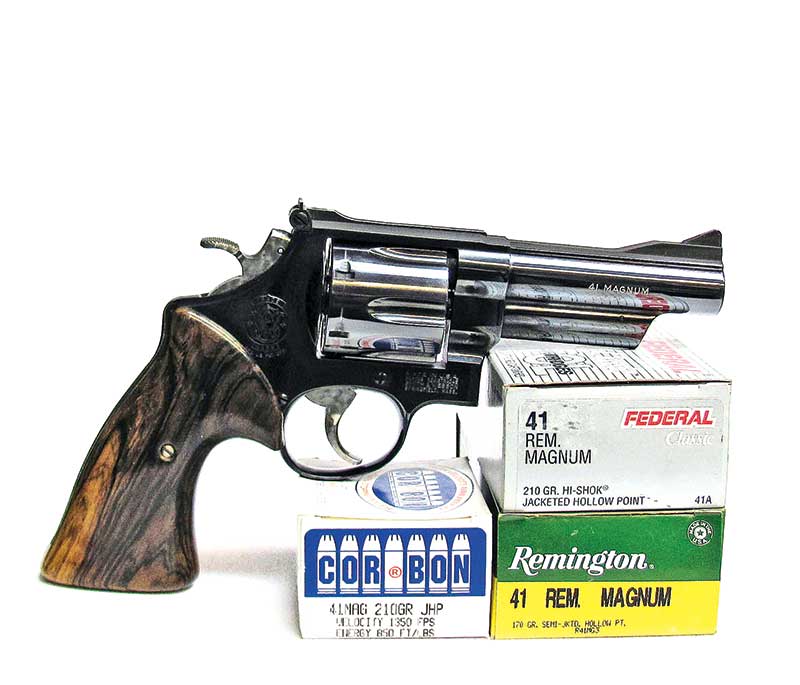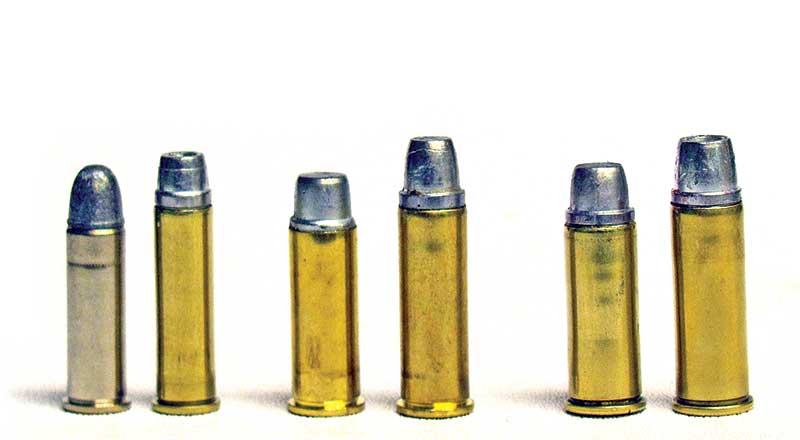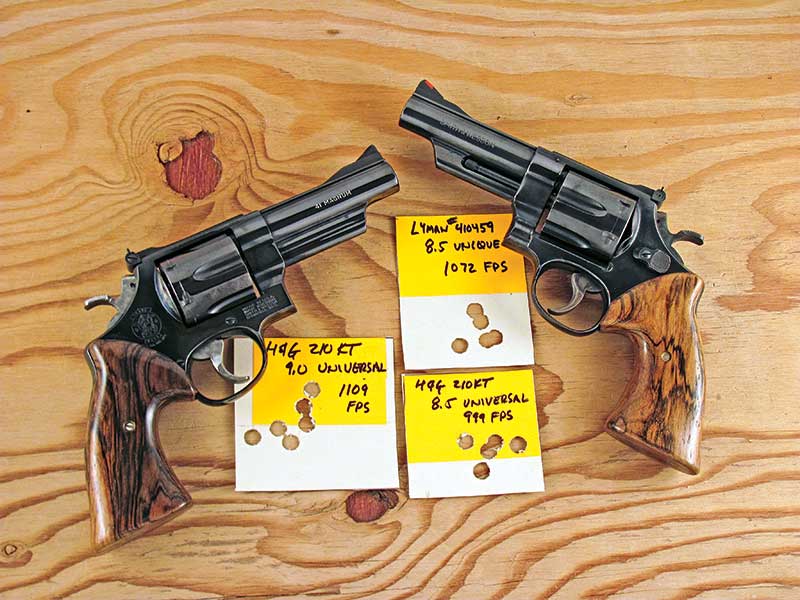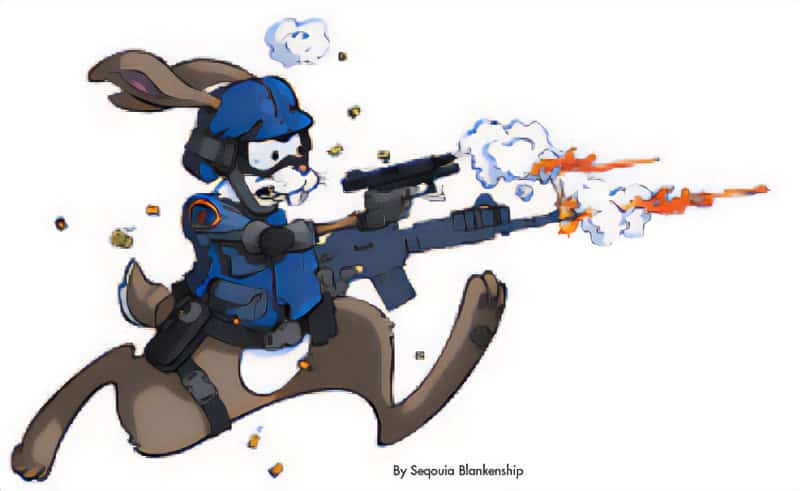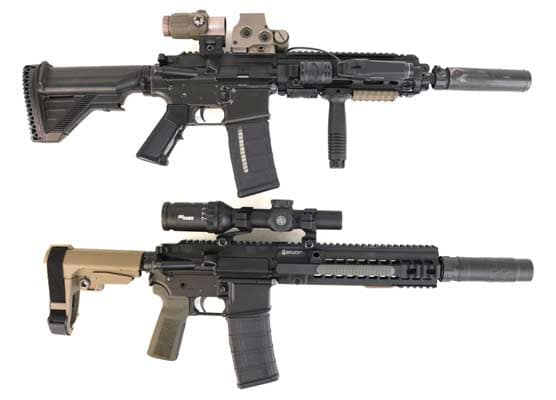Easy To Load
This 220-gr. bullet, cast hard, makes an excellent high-performance load whether the targets be live game, steel critters or an elusive tin can on the side of the yonder hill. One of the reasons this bullet is such an excellent performer is its long nose fills out the cylinder to the end. The longer a bullet is, all other things being equal, the more accurate it should be at long-range. I have used my standard 220-gr. Keith bullet/19 grains #2400 on both whitetail deer and one very upset, large feral hog. It has never failed.
While #2400 is an excellent powder for 1,400 fps loads in the .41 Magnum, it’s by no means the only powder to be used though. The same results can be had by employing either 22 grains of WW296, 22 grains of H110 or 22 grains of #4227. The latter powder is a real favorite of those who have found it develops top accuracy in Magnum sixguns, without heavy recoil or bore leading problems.
As with all Magnums, full-house loads are not always necessary or even desirable for the .41. Defensive situations, whether for practice or for real, call for high-performance loads having reduced muzzle velocities. The same is true of the loads which make pleasant Sunday afternoon plinking sessions or for teaching beginners how to shoot.
Loads in the 900-1,000 fps class are needed here. I prefer a #220 .411 bullet from an NEI mold which drops a semi-wadcutter weighing about 200 grains. This bullet has a flat nose which is almost .41 caliber itself. Loaded over 9.0 grains of HS-6 or 7.5 grains of Unique, this bullet at 900+ fps is perfect for these situations. This same NEI bullet over 21.0 grains of #2400 will deliver 1,600 fps from an 83/8″ Smith & Wesson giving a very flat shooting load. At maximum velocities, its large frontal area delivers maximum shocking power whatever the target may be. Its wide flat nose also makes for a defensive choice in short-barreled sixguns even though the velocities are at a very manageable 900 fps.
There are several jacketed bullets available for the .41 Magnum. For a flat- shooting, high-velocity load, Sierra’s 170-gr. JHC can be safely driven to 1,600 fps in a long-barreled .41 Magnum using either 22 grains of #2400, or 25 grains of either H110 or WW296. This is an excellent bullet for thin-skinned game. Sierra, Hornady and Speer all make jacketed bullets in the 210- to 220-gr. range which are top performers in the .41 Magnum at 1,300-1,400 fps in 83/8″ .41 Magnum Smith & Wesson sixguns. These velocities, along with excellent accuracy, can be obtained with 20-21 grains of either H110 or WW296.
Had the .41 Magnum arrived in between the .357 Magnum and the .44 Magnum it would’ve probably received greater respect as a natural step in the evolution of sixgun cartridges. Coming nearly 10 years after the .44 Magnum it instead remains the Sixgun Connoisseurs Cartridge. It’s difficult to not compare the .41 Magnum with the .44 Magnum. However, while the .41 Magnum cannot be made into a .44 — nor should it be — it’s an excellent performer in its own right. Any sixgun capable of delivering 220-gr. bullets at 1,500 fps can easily stand on its own merits. Those who take up the Smith & Wesson .41 Magnum must hold on to them, as while it’s relatively easy to find both Smith & Wesson .357 Magnums and .44 Magnums on the used gun market, one has to do a little searching to come up with a .41 Magnum.


